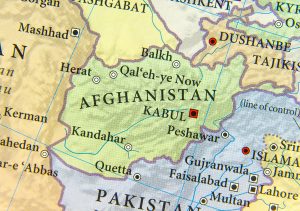The Taliban’s new deal is actually a repeat of a previous contract signed by the former Republic government with CNPC in 2011. That deal’s fate should temper expectations.

On January 5, the Taliban held a televised ceremony heralding the signing of the group’s first international agreement since taking over in August 2021. The agreement signed is a contract with a Chinese company for the exploitation of oil reserves in Afghanistan’s north.
Chinese Ambassador to Afghanistan Wang Yu praised the signing, saying, “The Amu Darya oil project is an important project of practical cooperation between China and Afghanistan.” He went on to say, “The progress of this project has created a model for China-Afghanistan cooperation in major projects in energy and other fields.”
Under the deal, Xinjiang Central Asia Petroleum and Gas Co (CAPEIC) will invest $150 million a year in Afghanistan, increasing to $540 million in three years for the 25-year contract. The project targets a 4,500 square kilometer area that stretches across three provinces in Afghanistan’s north: Sar-e Pol, Jowzjan, and Faryab. The latter two border Turkmenistan.
The Taliban government’s Acting Minister of Minerals and Petroleum Shahabuddin Dilawar said that the Taliban will have a 20 percent partnership stake in the project, with the ability to increase that to 75 percent. He said the first three years of the project would be “exploratory,” claiming that “[a]t least 1,000 to 20,000 tons of oil will be extracted.”
Back in December 2011, state-owned China National Petroleum Corporation (CNPC) signed a similar contact with the former Republic government. It was estimated at the time that the Amu Darya basin help up to 87 million barrels of crude oil. Then-Mining Minister Wahidullah Shahrani said in a news conference that “practical work will start in October 2012.” In March 2013, he said that “the wells are ready for production,” mentioning negotiations with an unnamed northern neighbor and the expectation that Afghanistan could be producing 25,000 barrels a day by the end of 2013. Instead, by August 2013, work had been halted and Chinese staff left the country — reportedly to save money as Kabul continued to negotiate with Uzbekistan on transit issues. Little was said about the project thereafter.
Of the previous agreement, Dilawar reportedly said it had “lots of problems.” The new deal resembles the previous one, a 25-year-contract with big expectations of an economic windfall. And yet the challenges that likely derailed the previous project remain relevant, joined by the unique difficulties Afghanistan’s current government faces.
While the earlier Republic government’s project was put at risk by the Taliban insurgency, the Taliban’s version is at risk of being targeted by the Islamic State Khorasan Province (ISKP). Same problem, new militant group. In addition, there are logistical difficulties that any project of this magnitude will invariably encounter. The reserves may not be as easily extracted as hoped, and the price tag could easily balloon. Whatever problems existed with the previous deal are unlikely to have disappeared. And then there are the unique challenges that are a product of the Taliban’s pariah status. Even Beijing does not formally recognize the Taliban government.
The fate of the 2011 deal — its quiet death — should temper expectations for the latest version.
